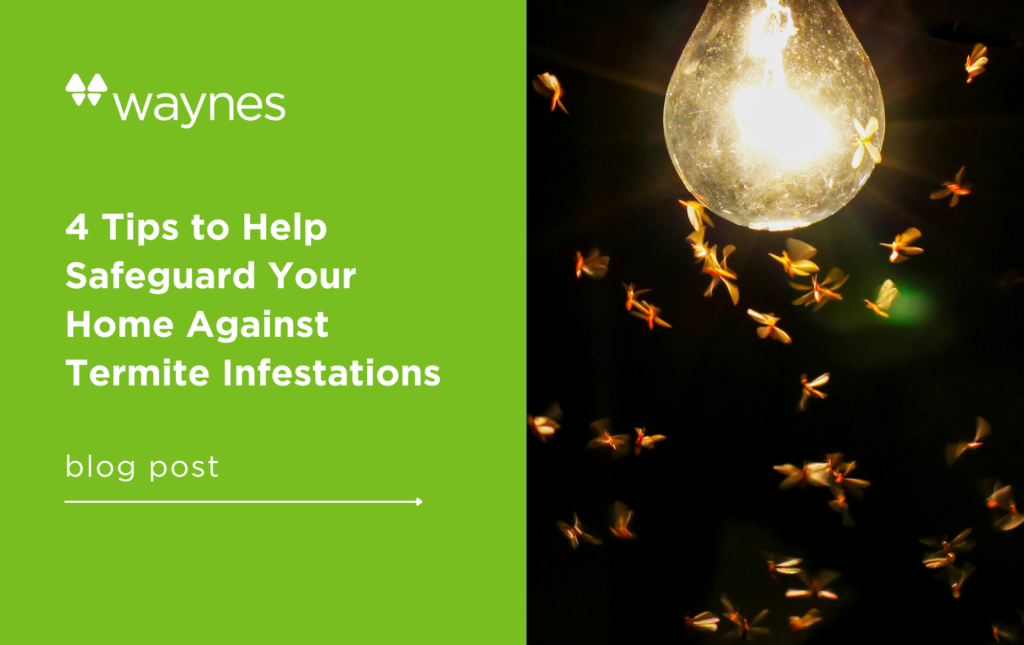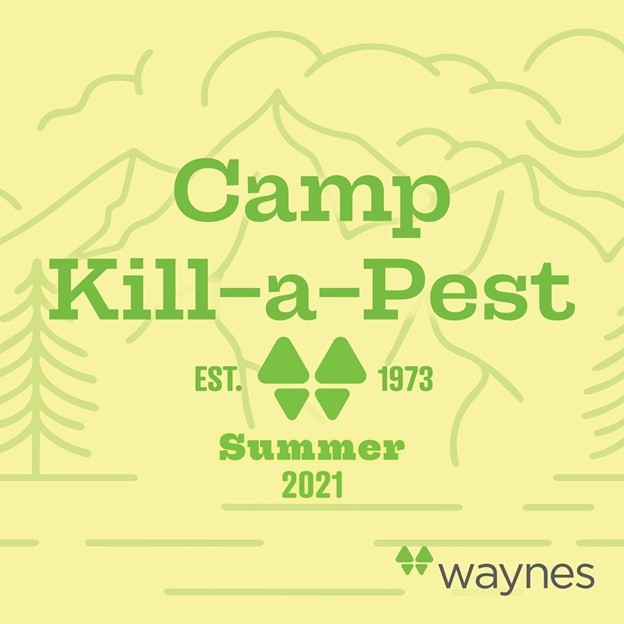Spring, summer, fall, or winter, bugs are out, about, and plenty active. AND they’re just pleased as punch to set up shop in your home or yard – invited or not – and possibly do a little damage while there.
Some of these pests only stay for a little while – albeit, still too long. And while others stay year-round, they tend to be more active during certain seasons. That said, we’ve put together this handy guide – a bug’s life calendar, if you will – so you’ll know what to look out for and when it’s time to take action.
Spring (March – May)
As the year turns warmer, we have a lot to look forward to as the days get longer and the grass gets greener. But with the rainy weather, bugs are drawn out of hibernation. They’re pretty much all hungry, and many are looking for shelter, quite possibly under your roof.
Termites – although these hungry buggers can be a year-round threat, it’s important to look out for them in early spring. If left unchecked, these pests will spend their days eating you out of house and home — literally.
Spiders – not to be the bearer of bad news, but almost every home has plenty of these eight-legged critters hanging around. On the bright side, most are harmless, even beneficial, since many eat bugs with more dastardly designs on your home. However, about mid-spring, you may see a rise in more harmful spiders, such as black widows and brown recluses.
Wasps – if no one has already nicknamed these as “little red devils,” we will. Many types of wasps nest in the ground by the hundreds, while a few species are primarily solitary. Others nest in those familiar honey-comb-shaped nests or wrapped paper tubes. Below- or above-ground, wasps serve a purpose in nature, even though they have a reputation for being bad-tempered, delivering a painful sting when they feel threatened.
Carpenter Bees – what’s yellow, black, and loves to drill holes in wood? That’s right – carpenter bees. They nest in those holes, often creating tunnels in the walls and foundation of your home. So, it’s best to put an end to their perverse form of carpentry before they do too much damage.
Summer (June – August)
It’s the season of summer vacations, and the bugs have chosen your backyard for a little R&R. Just because their idea of fun in the sun is eating your tomatoes and biting your legs, doesn’t mean it’s yours too. Get to know these tacky tourists so you can prepare for their arrival.
Ants – if you see them marching, they may be looking for something sugary. Summertime offers them plenty of opportunities to find tasty meals, what with all the picnics and outdoor parties we humans tend to throw this time of year. And when these little communal creatures do find what they’re looking for, they tell their friends, who tell their friends, and before you know it, you’ve got yourself a whole bunch of unwelcome guests.
Bedbugs – as with many of these pests, there’s no real “season” for bedbugs. Still, during summer, when we humans tend to travel a little more, bedbugs do too – as in we bring them home after, say, we stayed in an infested hotel while on vacation. And once bedbugs check in, they’re really difficult to evict. In part because they are hard to kill and because they are fertile little creatures – consider that one female can cause an infestation of 5,000 bed bugs in just a single six-month period.
Beetles – in Alabama, and many other parts of the country, certain breeds of beetles seem to explode on the scene in the summer months. For instance, the June bug is nocturnal and often congregates around outdoor lights. While it does eat the leaves of some plants, its larvae do more damage, chewing up turf and attracting small rodents that can do additional damage to your lawn.
Mosquitos – aka the scourge of summer. Roughly 60 different mosquito species can be found in Alabama. They’re as ready for warm weather as you are, but it’s your turn to bite back by making sure they stay away this summer.
Tomato Fruitworms – you’ve planted, watched, and waited, and these moochers are waiting for all your work to bear fruit. Not only will they eat your tomatoes, but they will make a mess of your whole garden. Let them know you aren’t sharing and get rid of these guys early.
Fall (September – November)
It’s that time of year when creatures large and small begin to think about finding shelter before the cold weather sets in. Before they do, scope out the cracks and crevices in your castle to help beat back these invading marauders.
Yellow Jackets – bad-tempered during the fall, when food becomes scarce, it’s best to give yellow jackets a wide berth. However, they actually feed on bugs that damage crops and flowers, so keep that in mind as they get all ornery as Halloween approaches. Keeping with that spooky reference, did you know that these flying predators are known to create “super nests,” which can house several thousand yellow jackets? It’s true. And when they do get cramped, they’ll start looking for additional nesting sites, maybe even at your home.
Armyworms – it may seem like these fatigue-wearing crawlers are mowing the lawn for you, but they won’t stop until, well, just about all the grass is gone. Don’t let these pests ruin your lawn or your garden!
Silkworms and Fall Webworms– these caterpillars are responsible for the scary-looking webs that cover tree branches, usually in the fall. Silkworms only feed on certain varieties of mulberry trees, while webworms are less particular, spinning their webs like an early Halloween decoration. Typically only damaging leaves, webworms’ silky nests are at the very least unsightly.
Monarchs – the lovely monarch butterfly is one bug we may not want to turn away. In certain areas, you will be able to see these beauties passing through as part of their winter migration. With a migration that lasts from late summer through fall, the eastern monarch travels an astonishing 3,000 miles from the eastern U.S. to southern Mexico; the western variety migrates to coastal California from several western states.
Boxelders – quite the nuisance, these orange-striped black bugs begin looking to come inside in late fall. They make their way to such shelter via cracks and gaps that can get them inside your home. Sometimes they will make their way into walls and attics, and who knows when they’ll leave. It’s better to leave them out in the cold to start with.
Winter (December – February)
Even the pests that are now hibernating can be a problem, that is, if that nap is happening in the warm environs of your home. Those that aren’t sleeping will certainly enjoy that hospitality, too, showing their appreciation by creeping around your home and making an appearance when you least expect them.
Stinkbugs – while these are the same pesky pests that eat your tomatoes during the growing season, winter is when they really get up close and personal. They’ll sneak inside your home to stay warm, then spice up the place in all the wrong ways. If you don’t want them in your garden, you definitely don’t want them in your home.
Ladybugs – beneficial when outside, helping rid your garden of aphids, mealybugs, and other bad actors, ladybugs can be quite the problem if they make it inside your home. These social ladies like to congregate in big packs and offer quite the scare when discovered by an unsuspecting human, say, tucked away in a dark closet or storage chest. Lay down the law before these guests start arriving.
Roaches – ick! Quite possibly one of the most unwelcome and hard to evict guests to find in your home. Once they experience the warmth and tasty treats your home has to offer, they become like ninja masters at scurrying about undetected. Prevention is key if you never want to see one ever again.
All seasons are bug seasons, but they don’t have to be. Waynes Field Professionals are trained to address all manner of pests inside and outside your home. Waynes pest control, mosquito protection, and termite protection services feature year-round treatments that can keep these uninvited guests under control. Call us today at (866) WAYNES1 to protect your home!









